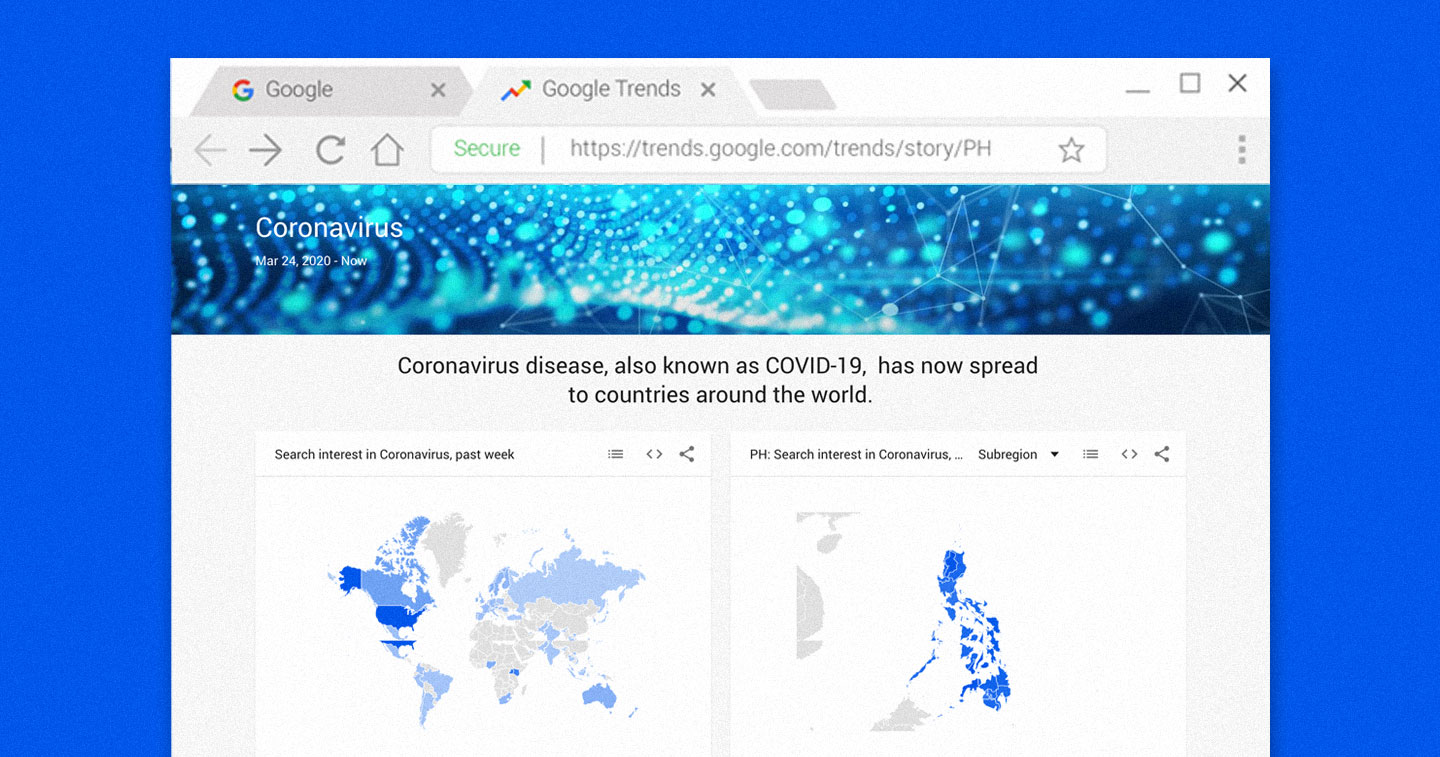Tools for journalists reporting on Covid-19. Reporting on Covid-19 is non-stop, so we wanted to share with you some tools you might find useful to help in your reporting efforts.
To understand what people are searching for: you will find a dedicated page on COVID-19 Google searches, as well as local pages including the Philippines. All of the charts and visuals on the Google Trends site are embeddable and made to share and publish online. Signup for a daily newsletter on how the world is searching for Covid-19. If you need to learn more about how Google trends works, go here.
To make sense of data and visualize it: Learn how to build your own data sets, clean them, and visualize them. You can also compare data through gifs with the data gif maker (learn more about the tool here).
To illustrate your stories: Learn how to use a range of mapping tools to illustrate stories, from MyMaps, Google Earth and features like timelapse.
To review existing fact checks, and add a markup for your own: Explore existing fact checks on the outbreak using the Fact Check Explorer and API.
If your team is working on debunking misinformation being circulated on this crisis, you can also add a Fact Check markup, which will label your article on Google properties as “Fact Check”.
To quickly find hard facts and expert opinion: Google Scholar is a search tool that allows you to find and explore a wide array of scholarly literature. Accessible material includes articles, thesis, books and abstracts from academic publishers, professional societies, online repositories, universities and websites. You might find it a useful way to contact academics and learn more about their work, as you research the coronavirus.
To take care of yourself while reporting: The Dart Centre for Journalism and Trauma is a resource centre and global network dedicated to improving media coverage of trauma, conflict and tragedy. This includes tips on covering disease, interviewing victims and survivors, and working with colleagues exposed to traumatic events.










